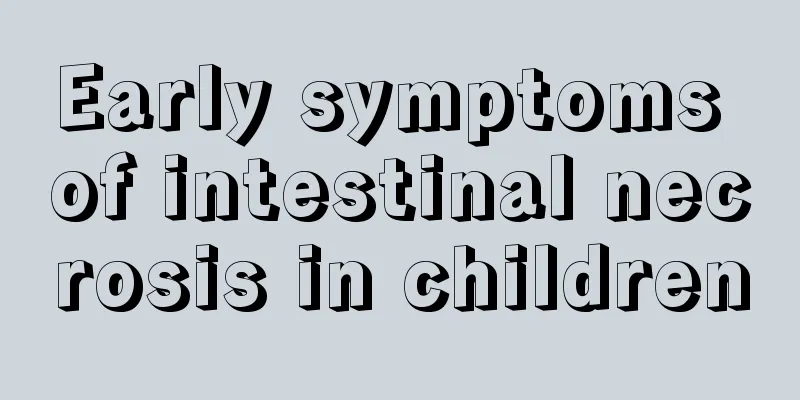Early symptoms of intestinal necrosis in children

|
When children fall ill, adults are always very worried because their resistance is really weak. Diseases that are not a big problem for adults may have different treatment times and possibilities of cure once they occur in children. There are many diseases that are common in children, and intestinal necrosis in children is one of them. So what are the early symptoms of intestinal necrosis in children? The harm caused by intestinal necrosis is particularly serious, and the mortality rate is very high. More children will show symptoms of intestinal necrosis, which seriously damages the health of the children. We must be vigilant about intestinal necrosis and must correctly understand the symptoms of the disease. After the onset of the disease, the children will feel nausea and vomiting, which often occurs together with abdominal pain and diarrhea. The vomitus of the children is mostly coffee-like, yellow water-like, and bloody. More seriously ill children will also vomit bile. When there is intestinal wall exudation and intestinal necrosis, there will be symptoms of peritoneal irritation. However, the levels of serum alkaline phosphatase, lactate dehydrogenase, creatinine phosphokinase, etc. usually increase after intestinal necrosis occurs. Various imaging examinations can only show early manifestations of intestinal obstruction such as gas distention, intestinal entrapment, air-fluid level, and thickening of the intestinal wall and intestinal space. CT and ultrasound Doppler examinations have certain reference value for the blood supply of mesenteric vessels. Children with intestinal necrosis may show abnormal general condition, body temperature, pulse, blood pressure, and blood oxygen. Although most scholars believe that the clinical manifestations before intestinal necrosis are non-specific, close monitoring and careful clinical observation as well as early detection of disease changes are still important indicators for clinical diagnosis. Causes of intestinal necrosis in children Various types of intestinal obstruction in children are the most common causes of intestinal necrosis. Mesenteric strangulation such as intestinal torsion and intussusception causes occlusion of mesenteric blood vessels; direct compression by adhesion bands can also cause intestinal necrosis; excessive expansion of the intestinal cavity increases the intra-intestinal and intra-abdominal pressures, affecting the blood perfusion of the intestinal wall, and may cause extensive or focal necrosis. Intestinal inflammatory lesions, such as ulcerative ileitis, Crohn's disease, acute hemorrhagic necrotizing enteritis, congenital megacolon-induced enterocolitis, typhoid fever and intestinal tuberculosis, may cause intestinal necrosis at different stages of the development of the lesions. Now parents know that your baby’s simple diarrhea may be an early symptom of pediatric intestinal necrosis. Sometimes there are no early symptoms. Once the child has diarrhea and vomiting, and these symptoms do not improve for a period of time but become more and more serious, you must go to the hospital for examination and treatment in time! |
>>: Can children use aloe vera gel on their faces?
Recommend
Why are baby's eyes yellow?
If a newborn baby has any health problems, parent...
Little boy's nose often bleeds
It is very common for children to not pay attenti...
Why does the child drool all the time?
Children have no sense of independence and often ...
What is the normal vision of children?
Now, for the healthy growth of children, parents ...
What is the cause of port-wine stain on children’s lips?
If a child has a bright red stain on his lips, yo...
Baby Lou Gehrig's disease
Nowadays, every child is the treasure of the fami...
What to do if your child always has a runny nose
Children's health is a matter of great concer...
What are the best treatments for eczema in children?
It seems that everyone has had this experience, h...
The child has dizziness and chest tightness
Children are full of energy. Parents often see th...
What should I do if my child is allergic to ultraviolet rays?
Because children's skin may be relatively fra...
What's wrong with a three-month-old baby's throat making a gurgling sound?
Babies will encounter many problems during their ...
What is the best way to treat anal fissure in children?
Children are more likely to have intestinal probl...
Reasons why babies cannot sleep well in the second half of the night
Sleep is a process of enhancing human immunity. F...
What are the treatment, diagnosis and prevention of albinism in children?
Children nowadays are so happy. Their parents nev...
What should I do if my full-month baby has a hoarse voice?
When the baby is stimulated by infertility reason...









